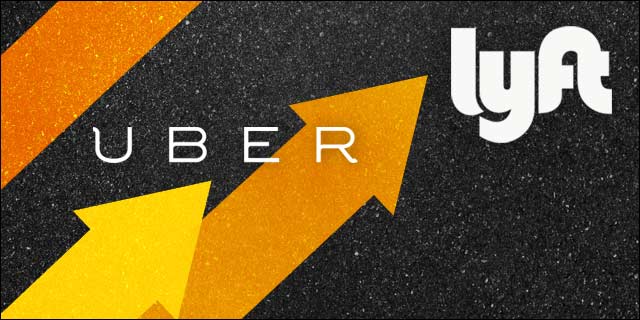 I recently went to both New York and San Francisco to visit my sons. I think it is fascinating to watch how Uber and Lyft (and Sidecar) are disrupting the cab industry, an industry until recently seemed relatively safe from others due to the high barriers of entry. In fact, in some cities in the last year, it has become almost difficult to get around unless you use Uber or Lyft. These companies are virtually remaking the economics of transportation with the use of a digital marketplace.
I recently went to both New York and San Francisco to visit my sons. I think it is fascinating to watch how Uber and Lyft (and Sidecar) are disrupting the cab industry, an industry until recently seemed relatively safe from others due to the high barriers of entry. In fact, in some cities in the last year, it has become almost difficult to get around unless you use Uber or Lyft. These companies are virtually remaking the economics of transportation with the use of a digital marketplace.
In the past, to own a cab in New York or San Francisco (and other cities as well), you had to purchase a medallion. Medallions were very expensive and hard to get as they were used to control the number of cabs on the street. Some drivers would be on waiting lists for more than 10 years, and when their names came up would pay the city $250K up to $1.3M to own them. There was a secondary market to sell medallions, or they would even be passed down in the family as part of an estate.
Uber and Lyft made the case that the regulations didn’t apply to a service that no one envisioned when the laws were made. Uber and Lyft have opened up the market with start-ups that can turn anyone with an approved car into a driver for hire, who can work for multiple companies simultaneously. What made Uber and Lyft’s new business model successful was finding a way around the barrier to entry with a creative view, but also using technology to support their new business model. These companies used new sources of value in cost, experience, and platform as a foundation for their success.
Their cost model is very transparent, as you can get an exact quote before engaging a cab. Through technology, you can share a cab with a stranger to reduce your costs. Costs change dynamically based on demand. And, rebates, promotions, and coupons are used as my son was quick to accept the $20 credit for signing up a new customer.
The experience and platform is very personalized and automated. You can see the face, name, and the car of the driver picking you up. Automation shows you where they are and exactly when they will be at your location. Your entire experience is automated as you request a car and pay for it with a few simple keystrokes on a mobile device, providing quick and easy anytime and anywhere access. Uber and Lyft has access to information the cab companies never had, as they get a GPS trace of every ride in every neighborhood, of every driver and passenger.
Digitalization of services and processes allowed Uber and Lyft to provide more value to customers without having to go through the conventional value chain. They successfully avoided capital investments and regulatory requirements of the incumbents in the industry.
Next time you dismiss digital disruption in your industry due to barriers of entry, rethink the possibilities before someone else does.






